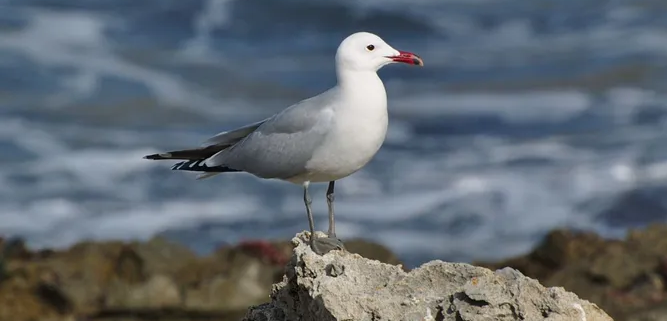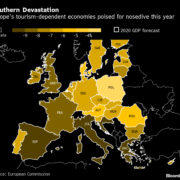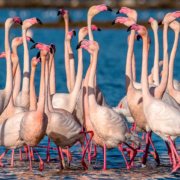Endangered
The Algarve houses the largest colony of Audouin’s gulls in the world

The Audouin’s gull is declining around the world but flourishing in the Algarve, establishing there the largest colony in the world. Year on year this threatened species has increased since settling in the Ria Formosa a decade ago. More than seven thousand nests were counted this year, three times more than in 2019 when the LIFE Ilhas Barreira project started.

This grey-legged gull is identified by its red bill and -unlike other species of gulls- continues to feed mainly on fish and rarely consumes waste from skips, bins or other types of human waste. Worldwide the species only breeds in a small number of colonies, which leaves it very vulnerable to human disturbance.

In Portugal, the Life Ilhas Barreira project – funded by the EU LIFE programme – has minimized this threat in the species’ main breeding colony, the Deserta/Barreta island. The results are visible. Not only has the breeding population of the Audouin’s gull increased every year, the species has expanded to the neighbouring island Culatra.

‘This new colony in Culatra provides more security for the future’, says Joana Andrade, coordinator of the LIFE project and the marine conservation department of the Portuguese Society for the Study of Birds (SPEA)
‘By safeguarding these areas, we guarantee that the birds have alternative places to nest in case of human disturbances or environmental changes’.
Another endangered bird as a result of habitat destruction is the owl. Only seven out of a possible 250 species worldwide can be found in Portugal. Owls generally breed in winter, making that season a more vocal and active season for them.

The Short-eared Owl (Coruja-do nabal) is between 34 to 43 cm in length and widely distributed across Portugal.
They mostly hunt in daytime when voles, their favourite meal, are active.

The Little Owl (Mocho galago) only measures 21-23 cm in length.
Except swooping down silently on their prey, they also hop around, pecking in search of insects, small reptiles and frogs.
They have the most extensive range and population of any owl in Portugal.

Euroasian Scops Owls (Mocho d’orelhas) are tiny owls – a little smaller than the Little Owls, measuring only 19 cm in length – that feed mainly on insects (crickets and beetles).

By contrast, the Euroasian Eagle Owl (Oehoe) is a top predator and the biggest in Europe, measuring 66 to 71 cm in length and a massive 2m wingspan. They prey on small mammals and birds and are at their most vocal in the autumn and winter, with the male’s territorial ‘oehoe’ call, deep and resonant.

Barn Owls (Suindara), 34 cm in length, tend to inhibit abandoned barns.
Farmers love them because they keep the property rodent-free.
Their screechy sound is more reminiscent of a hawk. They can carry prey up to 200 grams

The Long-eared Owls (Bufo pequeno), measuring around 34 to 40 cm, are also known as Cat Owls because of their cat-like facial features.
They are tough to spot. During the day, they usually hide upright against the trunk of a tree.

In urban areas – particularly in areas with wooded habitats – you may found Tawny Owls (Coruja-do-mato), circa 38 cm in length.
As nocturnal hunters, they remain silent on perches and locate their prey by hearing.

Owls are predators, developed to capture and kill. Under the feathers the owl has a sharp hooked beak and eight strong arched talons – sharp hooked claws, one per toe, four per leg – excellent ears and most can fly in absolute silence. They are best known for their typical hooting calls.
Young owls (owlets) leave the nest before they’re able to fly and climb into nearby branches using their beaks, claws and wings. Five to six weeks after they hatch they start flying and hunting on their own.
Enjoy the week Approveite a semana (pic PtRes/Eaglewatch)









